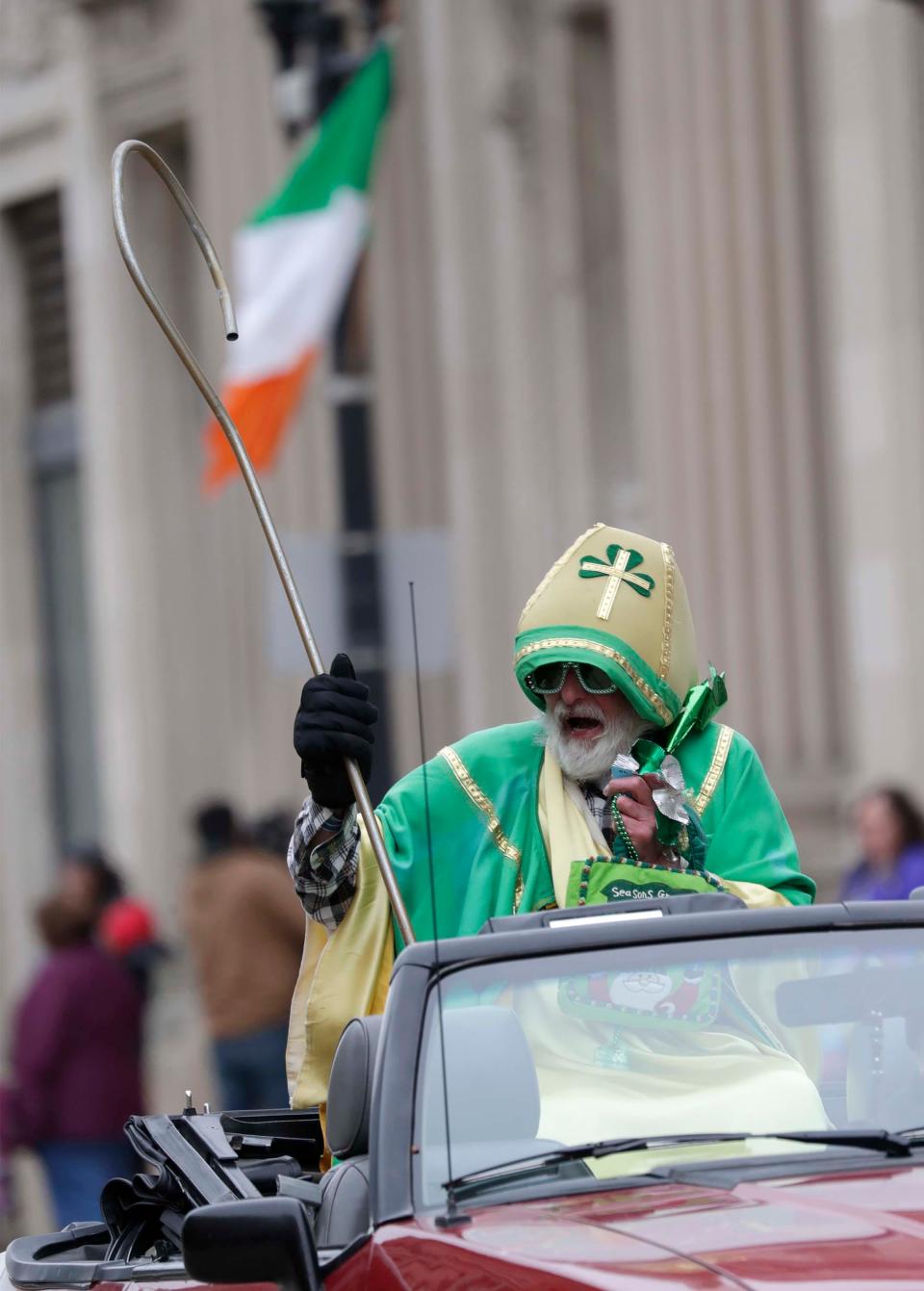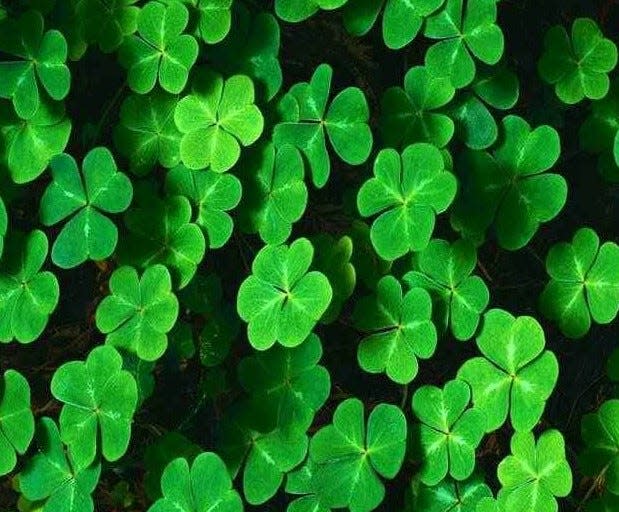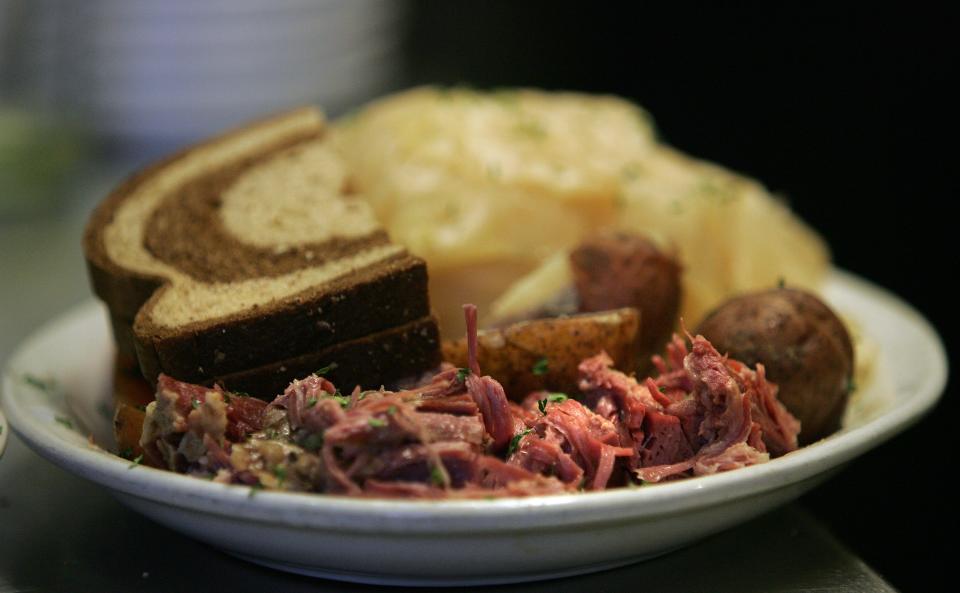8 things to know about St. Patrick's Day, including why Manitowoc isn't having a parade this year
- Oops!Something went wrong.Please try again later.
MANITOWOC - Get out that leprechaun hat and drink some green beer!
OK, so those might be distinctly American ways to have fun on St. Patrick’s Day, a celebration of Irish heritage held on March 17 every year.
With festivities upon us, we thought we’d dig a bit into what makes the day so special.
And who better to turn to than Tim Moore, owner of Moore’s Irish Pub, 811 Jay St., in Manitowoc?
Here are seven things Moore, whose great-great-great grandparents came to America from Ireland, shared about what St. Patrick’s Day means and why it remains so popular.
St. Patrick's Day weekend events: Manitowoc's 5 can't-miss events include Cobia celebration, pub crawl and St. Patrick's Day events
1. Who is St. Patrick anyway?
He’s the patron saint of Ireland, as the guy who brought Christianity to Ireland, Moore said.
He lived in the fifth century and was born in Roman Catholic Britain.
According to the BBC, at the age of 16, Patrick became a slave and was taken to Ireland to be a shepherd. He turned to his strong Christian faith during those years and spread Christianity through baptism and confirmation.
Oh, and he didn’t banish snakes from Ireland, as one myth goes, simply because there were no snakes on the Emerald Island for him to chase away.

2. Why do we celebrate St. Patrick’s Day?
The holiday was established in 1641 as a religious holiday. People used it as a way to break from the strict dietary and drinking restrictions of Lent, according to insider.com. It became a public holiday in 1904.
St. Patrick’s Day grew into a huge celebration with green beer and parades in the U.S. as a way for Irish immigrants to celebrate their heritage.
3. What do leprechauns, those tiny men wearing green, have to do with St. Patrick’s Day?
They’re part of Celtic lore and said to protect magic treasures, Moore said.
In fables, which existed long before St. Patrick’s Day was a thing, they’re described as short men who are good at making shoes.
After making their money, they hid it safely in pots at the ends of rainbows. The myth likely became attached to St. Patrick’s Day after Disney released a movie about leprechauns and the luck of the Irish, "Darby O’Gill and the Little People," in 1959.
4. And what about those green shamrocks?
A shamrock is not the same as a four-leaf clover, Moore pointed out.
The Irish shamrock actually has a religious connection — a sign of the triune God — father, son and holy ghost.
Even as St. Patrick’s Day has drifted from a strictly religious celebration, the shamrock carries on.

5. Speaking of the color green — why is it associated with St. Paddy’s Day?
That originates from the colors of the Irish flag — green, orange and white, Moore said.
Green is closest to the flagpole and represents Roman Catholics. Orange represents the minority Irish protestants, who backed William of Orange at the time Ireland split from Britain. And white represents the hope for peace.
Green became a color of pride for the Irish and eventually became part of holiday celebrations.
6. What about green beer?
That’s a strictly American tradition, and one you won’t see in Ireland, Moore said.
The Irish celebrate with Irish beers, including Guinness, Smithwick’s or Harp Lager, and Irish whiskey, such as Jameson, Redbreast or Bushmills.
According to Vox.com, Thomas H. Curtin started the tradition of green beer in 1914 when he added a splash of color to the brew served in his club to make it more festive.
7. Why do we eat corned beef, cabbage, potatoes and Rueben sandwiches?
Again, you won’t find the masses in Ireland turning to a meal of corned beef on St. Paddy’s Day.
According to the kitchn.com, Ireland has a long history with salted (with salt grains the size of corn kernels) beef, which it widely produced for centuries, but poor Irish people could not afford to eat. Only when they came to America could they afford it, as, ironically, it was their best option for a lower-cost meal. They paired it with affordable cabbage and the potatoes they were familiar with. It was the Irish-American consumption of corned beef that led to the association of that meal as a St. Patrick’s Day specialty.

Moore said both corned beef and Reuben sandwiches will be in high demand and served Friday and Saturday at his restaurant. He’s roasting three (or possibly four) briskets for the occasion, and when it is gone, it is gone. The pub and restaurant are open from 11 a.m. until close if you’re hungry for the tradition.
8. Why is there no St. Patrick's Day Parade in Manitowoc this year?
Parades are another way Irish-Americans have long celebrated St. Patrick’s Day. There won’t be one in Manitowoc this year, but Moore said organizers hope to bring it back.
State law says a state highway can only be closed for three days a year — and those are Memorial Day, Fourth of July and Christmas.
Organizers hope to find a route that doesn’t include Eighth Street, Moore said, but would like to keep the parade downtown.
Meanwhile, folks can participate in the St. Patrick’s Day Pub Crawl for some communal fun.
Read more recent stories:
Jimmy Carter visited Manitowoc: Jimmy Carter visited Manitowoc in 1976. He laid a wreath aboard the USS Cobia and spoke at the Senior Center. Here's a look back at his primary campaign stop.
Two Rivers training studio opens: Two Rivers training studio focuses on more than just losing weight — and more business news in Streetwise
Read more by Patti Zarling: Click here to read more articles by Patti Zarling
Contact reporter Patti Zarling at pzaring@gannett.com or call 920-606-2586. Follow her on Twitter @PGPattiZarling.
This article originally appeared on Manitowoc Herald Times Reporter: Why no Manitowoc St. Patrick's Day Parade in 2023: About the holiday
